Best Plants for Bathroom Smells
Less airflow within your bathroom can lead to indoor air pollution which, in return, can cause unpleasant smells, as well as health issues such as asthma and sick building syndrome. While air purifiers or fresheners quickly and effortlessly, plants are a good option if you are looking for a natural, therapeutic and cost-effective way to clean up the air in your shower.
Some of the best plants for bathroom smells include Rubber Plants, English Ivy, Peacy Lily, Boston fern, Lady palm, Aloe Vera, and Spider plant among others. Some of these plants not only purify the air but also produce sweet scents that both your family and visitors will appreciate and enjoy all day. Read for details.
Peace Lily
The Peace Lily is an exemplary indoor plant that has been popular for decades. It has large glossy green leaves with spiky white flowers that grow up above the leaves like an umbrella. This plant’s leaves will give any space a lush, jungle feeling.

To many, the Peace Lily symbolizes peace, purity and prosperity, making it a perfect addition to your bathroom greenery.
It is wonderful when it comes to getting rid of the big five indoor air pollutants, including trichloroethylene, formaldehyde, benzene, xylene, and ammonia. The leaves and the topsoil of the plant suck, absorb and break down the chemicals.
These toxins can cause headaches, respiratory problems, and an increased risk of cancer. The Peace Lily can also remove airborne mold that aggravates allergies and asthma symptoms.
In addition, it helps get rid of acetone, a chemical released by electronics and certain cleaners
Peace lily This plant is more likely to bloom in bright indirect light, but it tolerates any level of indirect light, including low light.
It can also survive infrequent watering. Peace Lilies are known for wilting as soon as they start to dry out. They bounce back from the wilt quickly after receiving moisture.
Peace Lily plants can take low light and infrequent watering (or under watering), and the leaves will still look nice. When ingested, this plant is toxic to humans and pets.
Dendrobium Orchid
Dendrobium Orchids are pet-safe, air-purifying tropical flowering plants with thick green leaves that produce prolific clusters of pastel-colored flowers.
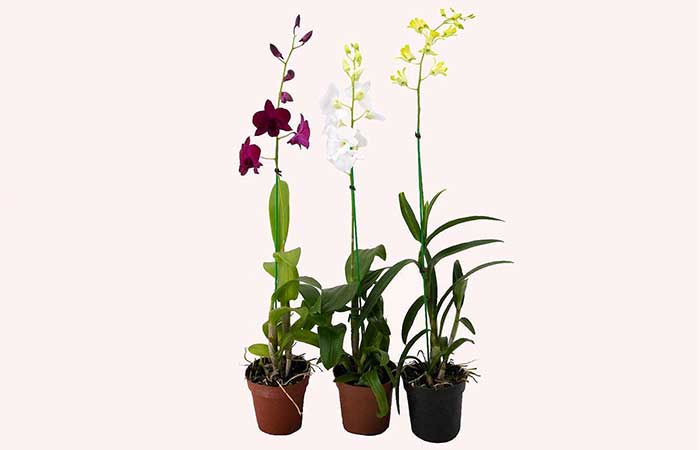
They are reasonably effective at eliminating harsh airborne pollutants, such as xylene, acetone, and chloroform. Orchid plants also produce beneficial oxygen even when you switch off your lights at night.
Orchids are low-maintenance, easy-to-care for plants that only need a small amount of water each week and can thrive in bright indirect sunlight. They require less attention and still blossom even when neglected.
Spider Plant
The Spider plant is an evergreen, perennial plant with tuberous roots and a tuft appearance. It has long and skinny foliage that arches out from its roots. Its leaves resemble the legs of a spider.

Spider ivy and ribbon plants are other names for the spider plant. At height and diameter it does not exceed 50 cm, but it can spread on the ground and cover a considerable area.
These plants are powerful air purifiers that can remove formaldehyde, a gas that is emitted by cigarette smoke, dry cleaning, synthetic carpeting, fingernail polish, and more.
Spider plants remove carbon monoxide, which you may find in rooms with fireplaces for stoves. They also filter other toxins including benzene, styrene, xylene, and toluene.
Fortunately, spider plants are effortless to grow and maintain. Just keep moist in a semi-sunny to a shady spot, and it will thrive.
Best Low Light Plants for Dark & Windowless Bathrooms
Boston Fern
The Boston fern is a frilly, grassy-green fern that’s refreshingly fancy to see around the house. It has several names such as Boston sword fern, wild Boston fern, Boston Blue bell fern, tuber ladder fern, or fishbone fern.

Boston ferns are excellent at removing a variety of indoor air pollutants, including formaldehyde and benzene, usually from fabrics, plastics or cigarette smoke, xylene, toluene (which are found in many paints, nail polishes, and glues) and others.
As far as care for Boston ferns goes, they enjoy growing in consistently moist soil and love higher humidity. They do not need terribly bright conditions to do well.
If you have space in your bathroom, this may be the perfect environment to grow these ferns.
Gerbera Daisy
Gerber daisies are beautiful and vibrant, and they come in a massive range of colors. Also called Barberton Daisy, they’re great for beginners because they tolerate low light and infrequent watering better than most other houseplants.
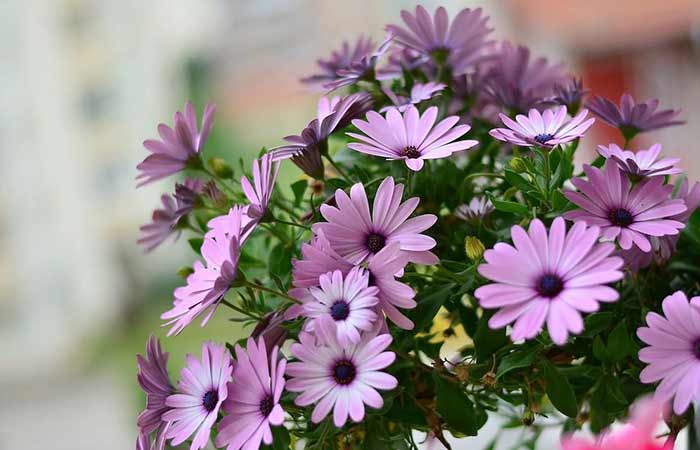
They’re a little more sensitive to cold than other plants, so keep them out of drafts and away from windows. Moist their leaves at least twice a week.
Gerbera daisies also have some really great benefits for your bathroom because they help clean formaldehyde from the air. In 24 hours, this flower can remove half of the airborne formaldehyde, 67% of the benzene and 35% of the trichloroethylene present in the bathroom.
Aloe Vera
This incredibly versatile plant is just as good at clearing the air as it is at soothing burns and scrapes.
Aloe vera helps clean formaldehyde, benzene, carbon monoxide, carbon dioxide, and trichloroethylene from the air in your bathroom. They can also help in absorbing excess moisture in your bathroom
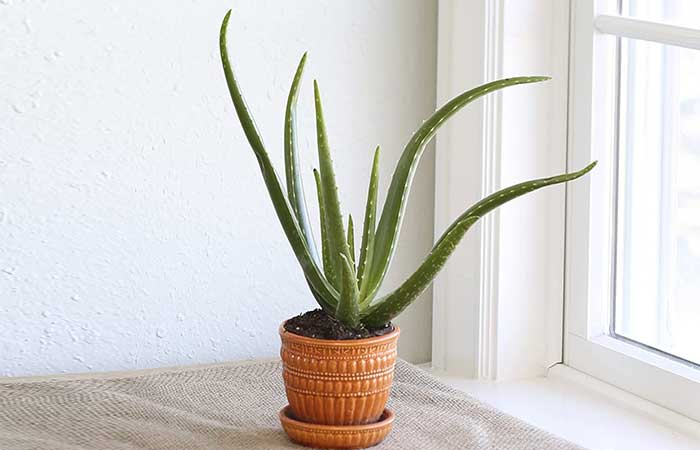
When the number of toxins in the air has exceeded healthy amounts, the leaves on the Aloe plant become spotted, signaling for caution.
Anthurium
The Anthurium’s colorful blooms look like flamingos. It’s also called the flamingo lily, painter’s palette, lace leaf, little boy plant, and tail flower. Anthurium plants also have spectacular shiny colorful spathes and spadices.
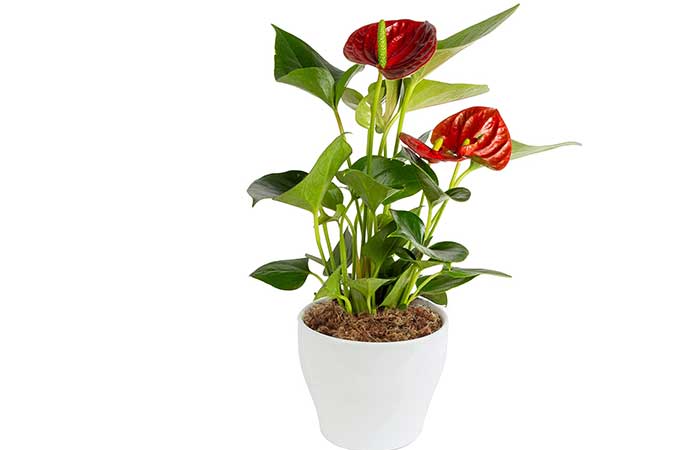
Flamingo lily features large leaves with dark coloring. It can grow to between 12 and 28 inches (0.71 meters) tall. This plant prefers high-humidity environments, just like the one present in the bathroom, making it a perfect fit.
The flamingo lily filters toxins, including ammonia, xylene, toluene, and formaldehyde
English Ivy
Also known as European ivy, this popular houseplant can be highly effective in filtering benzene, formaldehyde, and other toxins from the air.
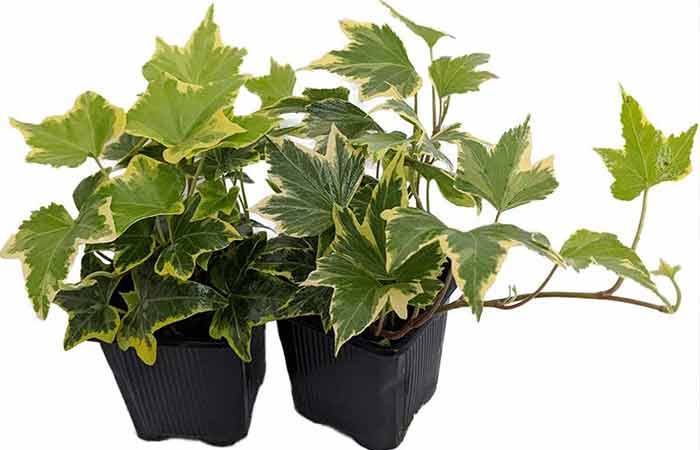
As an added advantage, there is also evidence that English ivy may reduce the amount of mold found your bathroom. It is also one of the best indoor hanging plants that you can place anywhere in your bathroom.
Rubber Plant/Tree
The rubber tree is absolutely gorgeous, with big leathery green leaves and a thick trunk that can get quite tall. The rubber plant tolerates low light and infrequent watering.
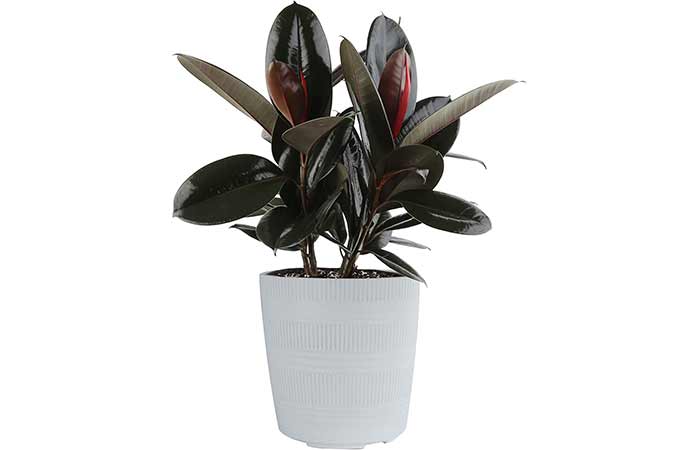
It produces lots of oxygen that will purify your bathroom. In addition to producing oxygen and eliminating air toxins, the rubber tree effectively removes mold spores and bacteria from the air.
These plants also collect granules, which help reduce the dust around your bathroom. It is a little more contained than some larger plants, so if you have trouble with toddlers or pets, this might be a good choice for inside your house.
Geranium
Geraniums are easy to grow and look great in the bathroom. The cultivated geraniums of the genus Pelargonium are herbaceous to woody, with thick fleshy leaves varying in shape from round to lobed, to deeply cut.

The flowers, borne in terminal clusters, vary in color from white through shades of pink to deep red and violet. They need lots of light for blooming but will tolerate moderate light conditions.
They’re also a huge help when it comes to adding humidity to the air, which can especially be a problem in winter when everyone is using heaters that dry out the air.
The aromatic, or scented-leaved, geraniums are of several species, including P. abrotanifolium, P. capitatum, P. citrosum, P. crispum, P. graveolens, and P. odoratissimum.
Minty, fruity, floral, and release spicy fragrances readily when you rub or bruise their leaves. These are the perfect ones for keeping your bathroom smelling awesome.
Geraniums also clean benzene from the air and can even alleviate some of its uncomfortable side effects (like headaches).
Pot mum (Chrysanthemum morifolium)
Chrysanthemums are some of the most powerful purifying plants on the planet. These pretty blooms help to filter out a host of toxins including ammonia and benzene.
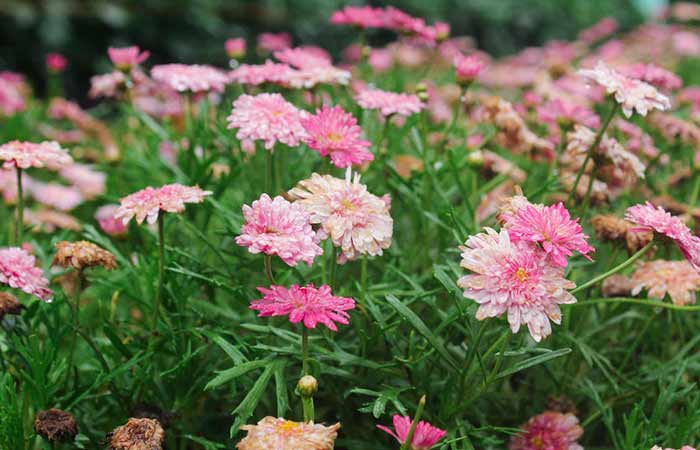
Pot mums like sunlight, so place them near a sunbathed window. Also, remember to water them water as soon as the soil is dry, an inch, or so from the top.
Red-edged Dracaena (Dracaena marginata)
The red-edged dracaena in an upright shrub that produces narrow leaves which are usually green, yellow, or cream-colored. When it matures, it often produces small white flowers and reddish-orange berries.
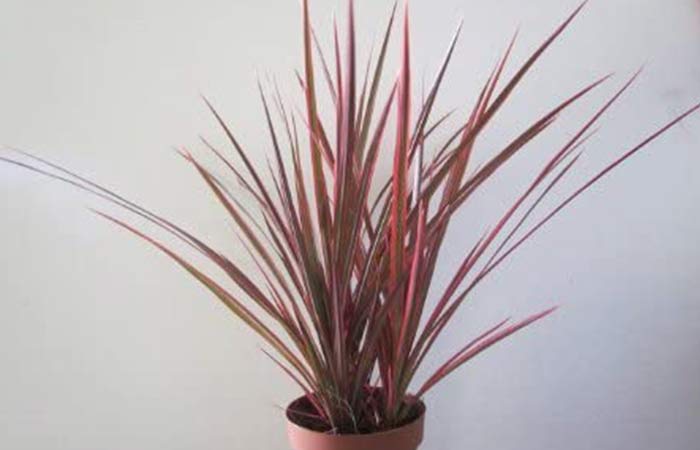
There are several stunning plants under the Dracaena family, but nothing beats the red-edged dracaena in regard to its promising air-purifying properties.
A standout with its signature purplish red margins on ribbon-like leaves, the red-edged dracaena can strip discontinued you breathe with dangerous formaldehyde, benzene, trichloroethylene, toluene, and xylene.
Like with most Dracaena houseplants, this indoor plant prefers to be in darker corners of the bathroom and does not require constant watering. In fact, it can go up to two weeks without a sip. Unfortunately, this plant is toxic to pets.
Snake Plant
The snake plant is great at removing all kinds of chemicals from the air. Having this pot of greenery will leave your bathroom free from impurities like carbon monoxide and formaldehyde, xylene, and toluene)
This might be a good choice if you smoke or have paint in your home

The most popular species and cultivars of snake plants are:
Sansevieria ‘Golden Hahnii’ – which has shorter leaves and yellow edges.
Sansevieria cylindrical – round, dark green and stripes leaves
Sansevieria trifasciata ‘Twist’– twisted foliage, horizontal patterns, yellow variegated edges.
Snake plant is also known for it absorb excess moisture in your bathroom. Here are more moisture-absorbing plants for your bathroom.
Lady Palm (Rhapis excelsa)
Lady palms remove formaldehyde, xylene, and toluene, but they are also extremely efficient ammonia cleaners. In addition, the plant purifies the air by adding moisture to it.
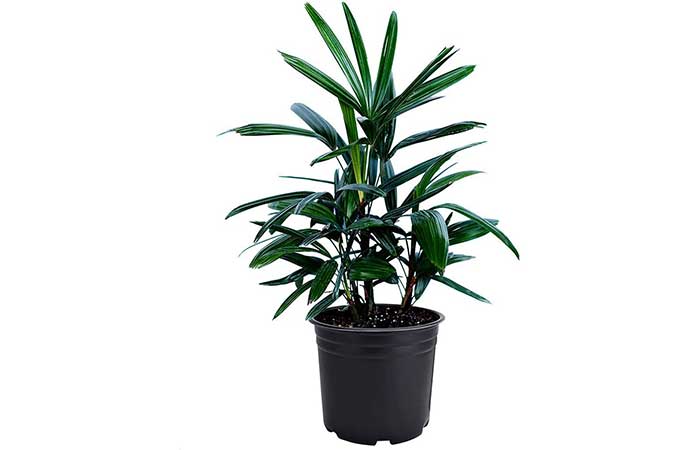
These gorgeous palm trees with their finger-like leaves do well inside the house without direct exposure to sunlight.
Be careful not to soak the roots. They grow slowly but consistently.
Bamboo Palm Tree
This great-looking plant is super low maintenance, tolerating low light and infrequent watering.
It has another name which is reed palm, the bamboo palm grows to about 5-7 feet tall and can thrive in shady indoor places.
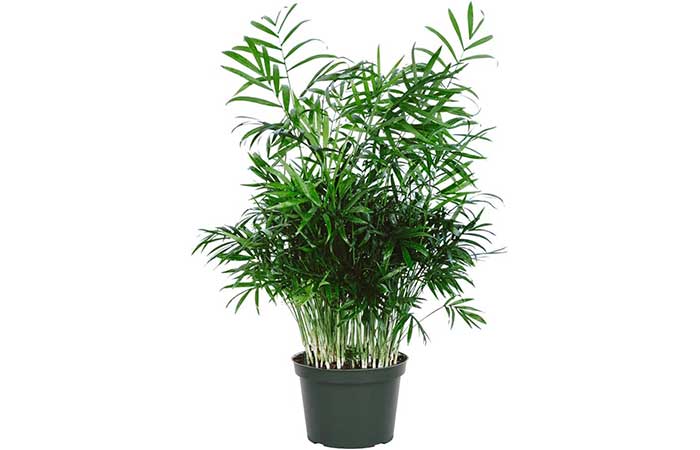
Bamboo palms prefer some humidity, indirect light, and a temperature between 65 and 80 degrees. This air-purifying plant can help filter formaldehyde, xylene, benzene, trichloroethylene, and toluene.
Philodendron
This is one of the most popular houseplants that you can have in your bathroom. The heart leaf philodendron specifically is a hardy plant that can withstand most conditions with minimal care, including low light.
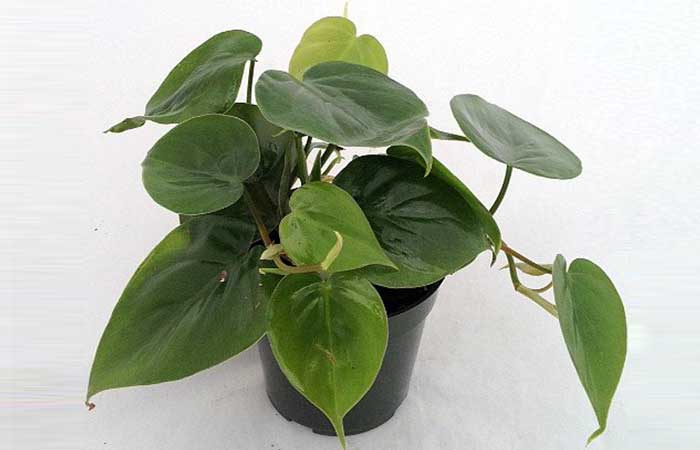
They are also excellent air purifiers and remove formaldehyde gases from the air.
Philodendrons come in climbing and non-climbing varieties. These tropical plants come with glossy green, variegated, and even maroon-colored leaves. It can grow as tall as three feet and as wide as six feet with proper care.
Pros and Cons of using Plants as Indoor Air Purifiers
Pros
A very inexpensive way to clean the air.
Plants can improve the humidity levels in the bathroom since they absorb moisture from the air.
They improve mental and physical health as they are very therapeutic.
Plants remove chemicals and toxins that many traditional air purifiers struggle to deal with.
Plants reduce the carbon dioxide levels in the bathroom as they take in carbon dioxide and give out oxygen.
Cons
Some plants require a lot of care as they need constant check-ups and also watering.
They are effective for some types of air pollutants.
Some plants are toxic to pets and human beings
More on Bathroom & Toilet Odors
Shower Drain Smells Like Mildew: Causes & Fixes
Shower Drain Smells Like Rotten Eggs: Causes & Fixes
Toilet Smells even after Cleaning-Causes & Fixes
References
- https://en.wikipedia.org/wiki/NASA_Clean_Air_Study
- https://ehp.niehs.nih.gov/doi/10.1289/ehp.119-a426
- https://www.healthline.com/health/air-purifying-plants